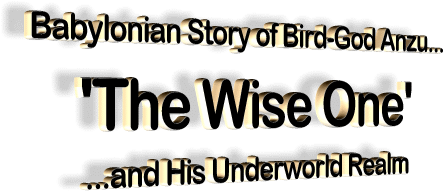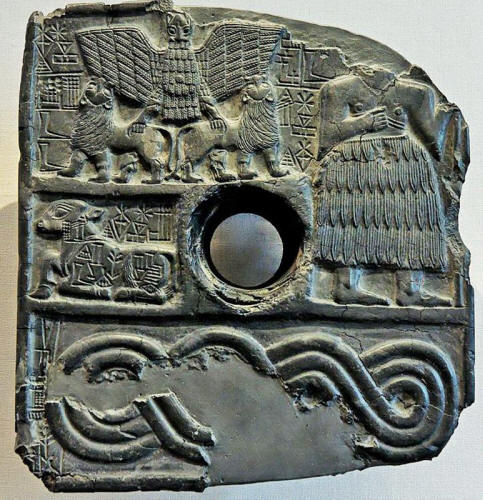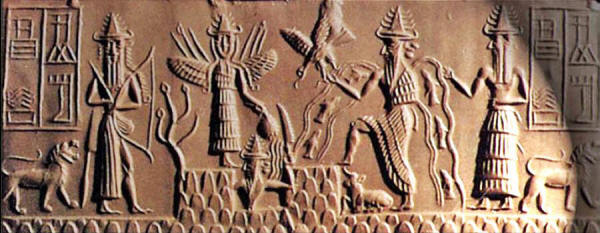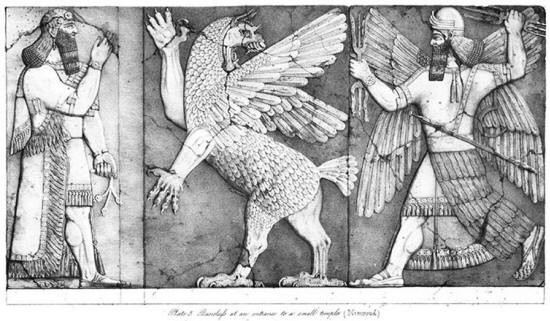|

December 10, 2016
from
MessageToEagle Website
Spanish version
Only fragmentary but still very interesting Babylonian myth tells
the story of a gigantic bird with a lion's head, whose flapping
wings were so powerful that they would cause sandstorms, tornadoes
and thunder.
This gigantic creature, half man and half bird with huge wings and a
beak "like a saw," could walk on two legs like a human and was
known as Anzu/Zu ('the wise one').

Votive relief
showing
evil bird-god Anzu/Imdugud,
during the rule of
Entemena, King of
Lagash, 2400 BC.
Credits: Louvre
Originally, the story was an earlier Sumerian myth, according to
which, this creature was associated with Sumerian storm demon - the
Anzu bird, which is represented among the stars by Pegasus
and Taurus.
The Akkadians had yet another version of
the evil bird-god Zu, named Imdugud/Anzu - 'the wise one of heaven'.
The evil Zu had one special wish, which was hard to fulfill:
he wanted to rule the gods.
In one of the myths Imdugud (or
Anzu) steals the
Tablet of Destinies from the great
god of the Mesopotamian pantheon, Enlil, who granted kingship and
commanded the fates; his command could not be altered.

Cylinder seal
(the Seal of Adda)
depicts judgment of
terrifying evil god-bird Anzu/Imdugud;
Akkadian period,
2350-2100 BCE.
Credits: British
Library.
Mesopotamian sky-god, Anu asked two
gods to volunteer to slay Anzu, but they refused in the face of the
supreme power Anzu, now possessed.
With the stolen Tablet of Destiny
(or in Sumerian: 'me'), a sort of divine template, the evil bird-god
escaped to a shelter on a mountain top in Arabia. He knew that the
wearer of this tablet had the full control of the universe and fates
of all.

Anzu and
Ninurta as
"Bas-reliefs from the
entrance to a small temple (Nimroud)".
The engraving was
made by the eminent Ludwig Gruner.
Eventually, a brave champion appeared on the scene.
The Babylonian sources say it was
Marduk and in Sumerian version of
the story, it was Lugalbanda, the father
of Gilgamesh, husband of the
goddess Ninsun and the third king of the city of Uruk.
In other versions of this myth, the god Ninurta, son of Enlil and
Ninhursag was the hero who managed to retrieve the divine template
of Enlil, by killing the bird with his arrows.
The story survived only in fragments, therefore no details regarding
Anzu's defeat are known.
There is only a cylinder seal impression that suggests that evil
thief Anzu, the enemy of the high gods, was finally brought before
Ea depicted as the water god, for judgment.
|




